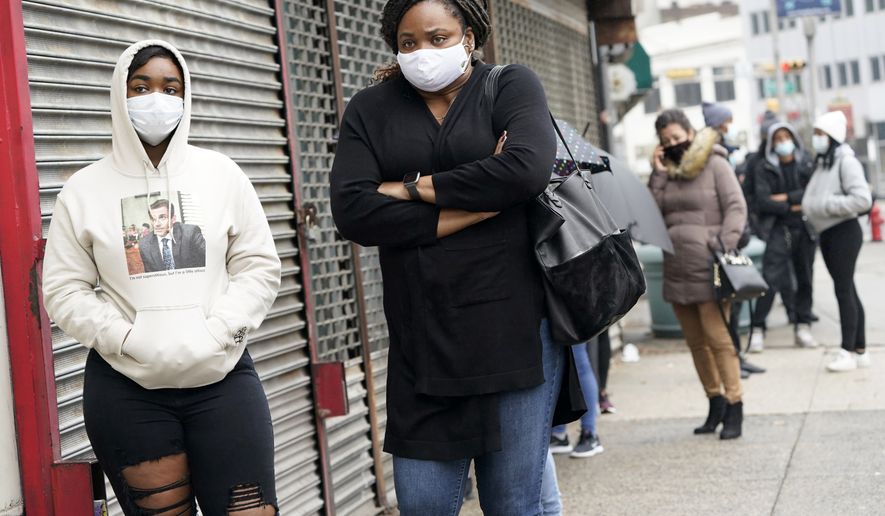Deaths from COVID-19 are ticking up slightly in the U.S. alongside record highs for recorded cases, with California, Texas and Florida reporting the most fatalities overall in the past week while the Dakotas and Montana report the most deaths as a share of their populations.
Roughly 800 people are dying from the virus per day in the U.S., according to the seven-day rolling average. It’s a far better picture than the 2,200-plus who died during the spring crush in the Northeast and 1,200-plus who were victims of the “Sun Belt surge” in mid-summer.
But the average daily death toll is up 12% compared to two weeks ago. As winter approaches, experts warn that increased transmission will follow a familiar pattern, with greater transmission leading within weeks to more hospitalizations and more deaths.
“Our national political leadership keeps saying we’ve turned the corner. Well, it looks like an upward turn to me,” said William Schaffner, an infectious-disease specialist at Vanderbilt University.
The good news is the share of people who are dying after testing positive for the virus is down to 2.6%.
Known as the case-fatality rate, the number is a marked improvement from the 3.4% in late July and about 6% during the initial crush in April and May, when states such as New York and New Jersey reported eye-popping numbers of problems in nursing homes.
Some of the decline is a mathematical issue — as testing capacity improves, there is a larger denominator of non-fatal cases. But the decline also can be explained by improving treatment and care, and the fact that transmission has trended younger, meaning a greater share of recoveries.
“The administration is sparing no effort or expense to save millions of lives. While the coronavirus poses unique challenges to public health and our hospital systems, through the ingenuity and dedication of our frontline medical workers, clinicians, and scientists we now have more information on how to better treat patients and protect the most vulnerable through increased care, life-saving therapeutics, and state-of-the-art testing,” White House spokesman Michael Bars said. “We continue harnessing the full power of the federal government in an unprecedented public-private effort to deliver a safe and effective vaccine and treatments to market in record time.”
Federal and state officials have taken efforts to protect residents of congregate living facilities — the Trump administration dispatched rapid tests to nursing homes across the country — but they haven’t been able to shut out the disease completely.
“Nursing homes in some states have been better-fortified but there are still cases coming from them in select areas,” said Amesh Adalja, senior scholar at the Johns Hopkins Center for Health Security.
People of all ages with underlying conditions such as heart disease and diabetes remain susceptible to bad outcomes from COVID-19.
“The deaths are still very much clustered among people of advanced age and people with serious underlying health conditions,” Dr. Schaffner said.
Texas reported the most deaths in the past seven days, at roughly 500, followed by Florida at 462, according to a New York Times tracker.
But the Dakotas are the key worry spot when controlling for population, with North Dakota seeing 6.8 deaths per 100,000 residents and South Dakota tallying 5.9 per 100,000 over the last week.
The case-fatality rate is based on the share of deaths among known cases. Because they were slammed early on, states like New York, New Jersey and Massachusetts have case-fatality rates of 7% while new hotspots like Wisconsin and both Dakotas are at 1% each.
Those figures can be misleading, however, given the large number of asymptomatic cases that go undetected. The real case-fatality rate for the disease is probably closer to 0.6%, experts say, which doesn’t sound so bad but is worse than the annual flu, which is often closer to 0.1%.
The U.S.’s known case-fatality rate of 2.6% is better than the 10% in Mexico, 7.1% in Italy or 3.1% in France, which is seeing a record spike in daily cases, according to a Johns Hopkins University tracker. French President Emmanuel Macron recently imposed nightly curfews to stem the spread of the virus.
As the virus spreads far and wide, the raw number of deaths mounts over time, with the U.S. tallying a world-leading 225,000 deaths from the disease.
The virus is killing about 69 people per 100,000 of the U.S. population, a rate slightly better than the 74-per-100,000 in Brazil or Spain, which declared a new state of emergency to deal with the pandemic, according to Johns Hopkins.
But it is roughly on par with the U.K., at 68, and worse than France (52), Israel (27), Germany (12) or South Korea, which recorded its first cases around the same time as the U.S. but is recording less than one death per 100,000 people.
• Tom Howell Jr. can be reached at thowell@washingtontimes.com.




Please read our comment policy before commenting.